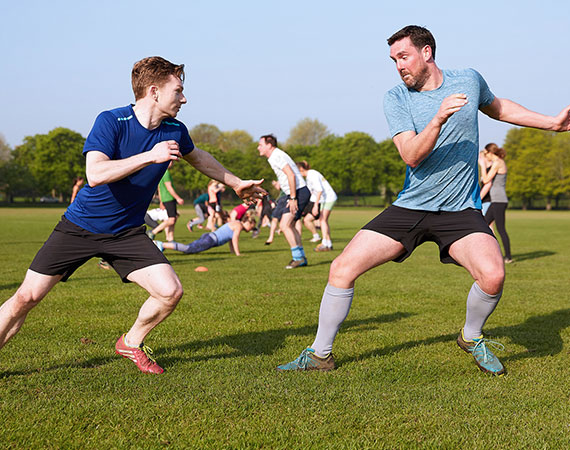Each year, the American College of Sports Medicine publishes its Worldwide Survey of Fitness Trends, an in-depth analysis of trends and fads in fitness and health. HIIT, or High Intensity Interval Training entered the chart at number one in 2014, and this year returns to first place once more. The survey, which includes responses from 4,122 fitness professionals worldwide, named HIIT as the number one fitness trend for 2018.
It’s clear then that this is a lasting fitness movement that isn’t going anywhere. Google searches for HIIT have quadrupled in the last five years, and it reached Google’s Year in Search report of the most-searched terms of 2017. The uptake of High Intensity Interval Training in gyms nationwide and the #HIIT hashtag trending on social media can make it feel like High Intensity Interval Training is taking over the world of fitness.
But does it really live up to all the hype? We’ve already brought you a beginners guide to how High Intensity Interval Training works. Now, it’s time to go back to basics and take a look at the movement behind the myth. Today, we’ll break down common questions about this popular training approach and bring you the real-life effects of this much-talked-about fitness frenzy.
HIIT: The Breakdown
I’m looking to shift some pounds. Can HIIT workouts really help me lose weight?
Yes, they can. Recent studies even suggest that in terms of fat burning, High Intensity Interval Training could outperform cardio workouts. That’s because training at a higher intensity deprives your muscles of oxygen during physical exercise, meaning your body continues to burn fuel during the recovery process. This ongoing fat burning effect could last for up to 24 hours after your workout! Not only that, but HIIT has been proven to balance hormonal fluctuations that can result in weight gain too.
I’m looking for a workout that improves my performance on the field. Does HIIT affect sports performance at all?
It does. HIIT has been proven to build endurance by improving your oxygen uptake and improving cardiovascular health, which is vital to realising your sporting potential and avoiding injury during busy periods of matches or training. The high-intensity physical activity of HIT will help you boost stamina in the long run, and regulate energy levels to help you keep your head in the game for longer.
I’m new to all this. Do I need a particular fitness level to try High Intensity Interval Training?
Nope, there’s no prior fitness level necessary. HIIT exercises are in fact a great entry level fitness technique because you can benefit from them whether you’re an athlete or you’ve never worked out before. All you need to ensure is that your heart rate rises above 80% of its maximal heart rate. This can be achieved from a mere 20 seconds of exercise followed by 10 seconds of rest, repeated. So High Intensity Interval Training is accessible all.
HIIT: The Summary
So, there you have it, ongoing research demonstrates that HIIT isn’t merely a health fad. It’s a proven strategy for weight loss, muscle maintenance and improved sports performance. It’s safe to say that, according to current studies, HIIT lives up to its hype.
Want to see what all the fuss is about? One Element’s training sessions have been specially designed with input from top fitness coaches. They include HIIT approaches that help you reach your fitness goals. Whether that means a marathon or your first set of burpees. But don’t just believe us, try it for yourself. Sign up for a free trial and feel the benefits of HIIT today.


